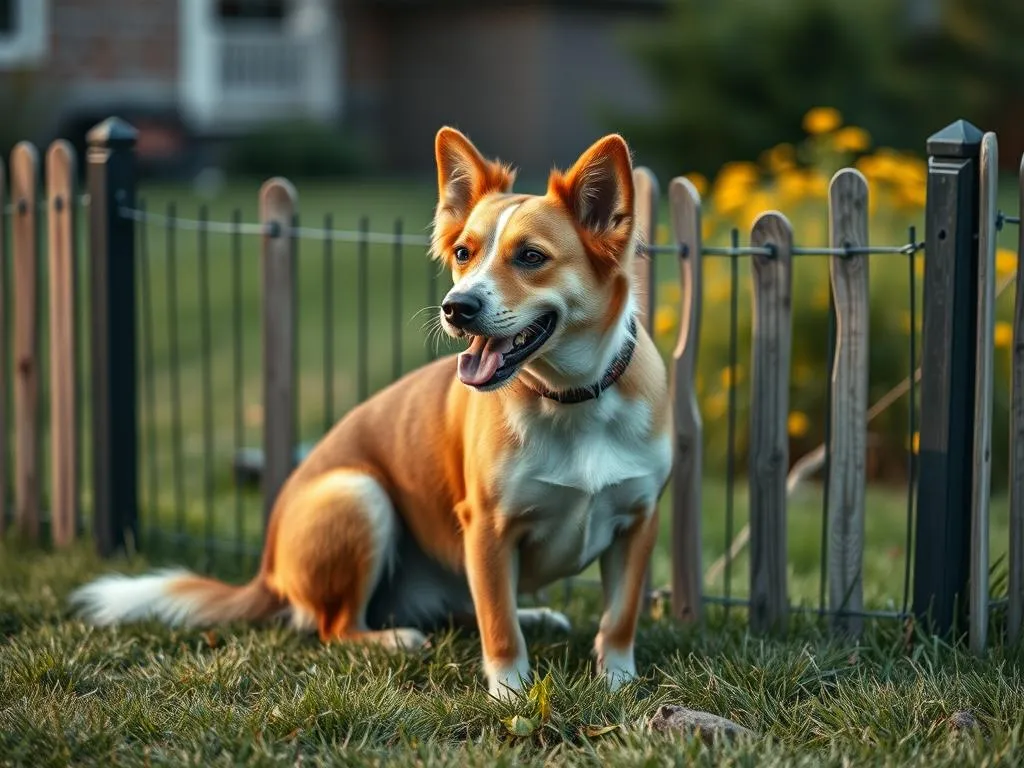
Introduction
Keeping our furry friends safe while allowing them the freedom to roam can be a challenging task. Whether it’s a busy street or a neighbor’s yard, it’s essential to find a solution that allows dogs to enjoy the outdoors without the risk of them wandering off or getting into trouble. This is where wireless dog fences come into play. They provide a flexible and effective way to create a safe space for your dog without the need for traditional physical barriers.
Choosing the right wireless dog fence is crucial, as various factors can influence its effectiveness and suitability for your pet. This guide will delve into everything you need to know about the best wireless dog fences, helping you make an informed decision for your canine companion.
Understanding Wireless Dog Fences
What is a Wireless Dog Fence?
A wireless dog fence is an electronic containment system designed to keep your dog within a predetermined boundary using radio signals. Unlike traditional fences that require installation and physical barriers, wireless fences are invisible and create a safe zone for your pet. When your dog approaches the boundary, they receive a warning beep, followed by a mild static correction if they cross the line. This system allows dogs to have free access to the yard without the need for a physical fence.
Types of Wireless Dog Fences
Boundary-based systems are the most common type of wireless dog fences. These systems utilize a transmitter that sends radio signals to a collar worn by your dog. When the dog approaches the boundary, they hear a warning sound, and if they continue to move closer, they receive a mild static correction. This type is ideal for homeowners with a defined yard.
GPS-based systems offer a more advanced solution. They use Global Positioning System technology to create a virtual fence around a designated area. This type of system can cover larger spaces and is particularly useful for active dogs that may wander far from home. With GPS-based systems, you can set customizable boundaries and receive real-time notifications if your dog leaves the designated area.
Benefits of Wireless Dog Fences
Flexibility and Convenience
One of the most significant advantages of wireless dog fences is their ease of installation and portability. Unlike traditional fences, which often require digging and construction, wireless systems can be set up quickly—usually within a couple of hours. Additionally, if you move homes, you can easily take the system with you, making it a versatile option for pet owners.
Moreover, the ability to adjust boundaries easily is a game-changer. You can redefine your dog’s play area based on your needs, whether you want to expand or shrink the safe zone.
Cost-effectiveness
When considering the long-term costs of pet ownership, wireless dog fences often prove to be more economical than traditional fencing. The initial investment in a wireless system is generally lower than that of a physical fence, which can involve significant installation costs. Furthermore, maintenance of wireless fences is minimal, saving you money in the long run.
Enhanced Safety Features
Modern wireless dog fences come equipped with several safety features designed to prevent escapes and accidents. Many systems include built-in safety alerts that notify you if your dog leaves the designated area. Additionally, some models allow you to set different correction levels, helping to ensure that the correction is appropriate for your dog’s size and temperament.
Key Features to Consider When Choosing a Wireless Dog Fence
Range and Coverage Area
The range of a wireless dog fence is one of the most critical factors to consider. The effectiveness of the system largely depends on how far it can transmit its signal. For smaller yards, a system with a range of around ½ mile may be sufficient. However, if you have a larger property, you might need a system with a range of up to 1 mile or more. Always check the specifications to ensure the system will cover your yard adequately.
Dog Size and Temperament
Not all wireless dog fences are created equal, especially when it comes to accommodating different dog breeds and sizes. Smaller dogs may require a system designed specifically for their size, while larger breeds might need a more robust model. Additionally, consider your dog’s temperament; some dogs may respond better to certain types of training or corrections. Look for systems that offer adjustable correction levels for better customization.
Training and Adjustability
Effective training is essential for your dog to adapt to a wireless fence system. Many models offer multiple training modes, allowing you to gradually introduce your dog to the boundaries. Customizable settings can help tailor the experience to your dog’s specific behavior, ensuring a smoother training process.
Battery Life and Rechargeability
Battery life is a crucial factor in maintaining the functionality of your wireless dog fence. Most systems operate on rechargeable batteries, but the lifespan can vary significantly between models. Look for systems that offer long-lasting batteries or easy recharge options to minimize downtime.
Durability and Weather Resistance
Your wireless dog fence must withstand various weather conditions. Look for models made from durable materials that can endure rain, snow, and sun exposure. Not only does this ensure the longevity of the system, but it also provides consistent performance regardless of the weather.
Top 5 Best Wireless Dog Fences
Product 1: PetSafe Wireless Fence
The PetSafe Wireless Fence is a popular choice among dog owners. This system features a circular boundary of up to ½ acre and is adjustable to fit your yard’s needs. The collar is lightweight and waterproof, making it suitable for various weather conditions.
- Pros: Easy installation, adjustable boundaries, waterproof collar.
- Cons: Limited coverage area for larger properties.
- Price Range: $200 – $300.
- Warranty Information: 1-year warranty.
Product 2: SportDOG Brand In-Ground Fence
This system is designed for larger areas, covering up to 100 acres. The SportDOG Brand In-Ground Fence offers customizable settings and is compatible with multiple collars, making it versatile for multiple dogs.
- Pros: Extensive coverage, durable design, multiple collar compatibility.
- Cons: More complex installation process.
- Price Range: $300 – $500.
- Warranty Information: 1-year warranty.
Product 3: Extreme Dog Fence
The Extreme Dog Fence is known for its reliability and strength. It supports up to 25 acres and features a dual-zone capability, allowing you to create multiple boundaries. The collar is also equipped with a safety shut-off feature.
- Pros: Extensive coverage, dual-zone capability, safety features.
- Cons: Higher price point.
- Price Range: $400 – $600.
- Warranty Information: Lifetime warranty on the wire, 1-year warranty on the collar.
Product 4: Garmin Alpha 100
The Garmin Alpha 100 is a GPS-based system perfect for active dogs. With a range of up to 9 miles, this system allows you to create custom boundaries. It also features real-time tracking and training capabilities.
- Pros: GPS tracking, extensive range, training functionalities.
- Cons: More expensive than traditional systems.
- Price Range: $800 – $1,000.
- Warranty Information: 1-year warranty.
Product 5: PetSafe Stay + Play Wireless Fence
For pet owners looking for a portable option, the PetSafe Stay + Play Wireless Fence is an excellent choice. It features a ¾-acre coverage area and is easy to set up, making it perfect for travel or temporary use.
- Pros: Portable, easy installation, lightweight collar.
- Cons: Limited coverage for larger properties.
- Price Range: $300 – $400.
- Warranty Information: 1-year warranty.
Installation and Maintenance Tips
Installation Process
Setting up a wireless dog fence is generally straightforward. Here’s a step-by-step guide:
- Choose the Location: Select an appropriate location for the transmitter, ensuring it’s in a central position to cover the desired area.
- Set the Boundaries: Use the system’s settings to adjust the boundary according to your yard’s layout.
- Test the System: Walk your dog up to the boundary to ensure they receive the warning signals and corrections.
- Train Your Dog: Gradually introduce your dog to the system using the training modes available.
Common mistakes to avoid during installation include placing the transmitter too close to metal objects or other electronic devices, which can interfere with the signal.
Regular Maintenance
Regular maintenance is essential to keep your wireless dog fence functioning correctly. Here are some tips:
- Routine Checks: Regularly inspect the collar and transmitter for any signs of wear and tear.
- Battery Replacement: Keep track of battery life and replace them as needed to ensure consistent functionality.
- Software Updates: If your system supports it, check for firmware updates to enhance performance and features.
Common Questions About Wireless Dog Fences
Can Wireless Dog Fences Be Used Indoors?
Yes, wireless dog fences can be used indoors. They are particularly effective for creating designated areas within your home, such as keeping your dog away from certain rooms or furniture. However, the signal range may be limited, so it’s crucial to test the system in your home’s layout.
Are Wireless Dog Fences Safe for All Dogs?
While most dogs can adapt well to wireless dog fences, certain breeds or individual dogs may have specific considerations. Smaller breeds may require collars designed for their size, while some anxious or aggressive dogs might not respond well to the correction. It’s essential to consult your veterinarian or a dog trainer if you have concerns about your dog’s suitability for a wireless fence.
How Long Does It Take to Train a Dog?
The training process for a wireless dog fence can vary depending on your dog’s temperament and previous training experiences. Typically, it takes anywhere from a few days to a few weeks for a dog to fully adapt to the boundaries. Consistency and positive reinforcement are crucial during this period.
Conclusion
Choosing the best wireless dog fence is an essential decision for any pet owner looking to provide a safe and secure environment for their dog. With various options available, understanding your dog’s needs and your property’s layout can help you make the right choice. From the flexibility of installation to the enhanced safety features, wireless fences offer a modern solution to a common problem, allowing your furry friend to enjoy the outdoors freely. Take the time to research and select the system that aligns best with your preferences and your dog’s needs.









